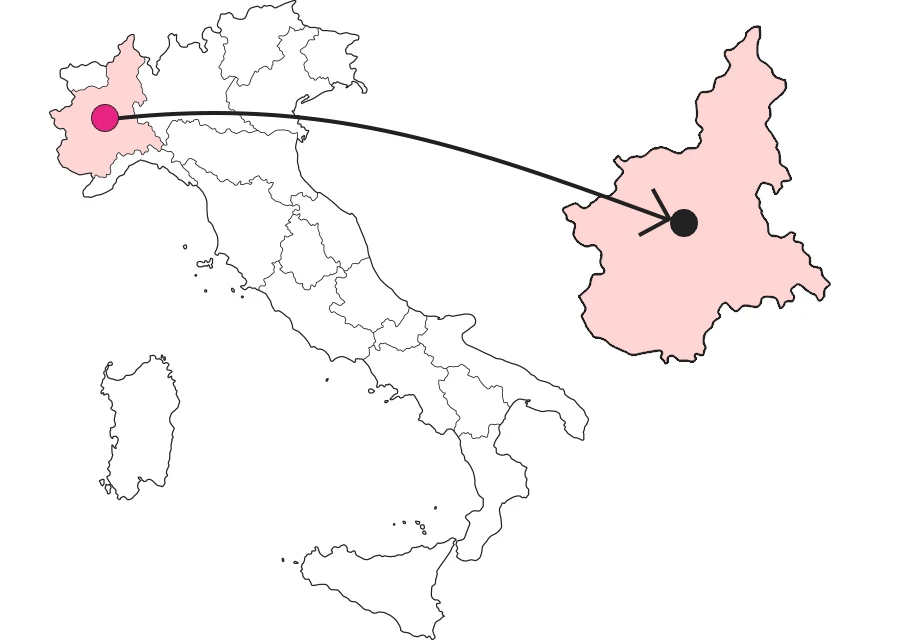SHARRYLAND


The birth of the Easter egg
When religious tradition and and culinary art "merge"


Where is

Of religious tradition and culinary art
Easter, like many other Christian holidays, is a time rich in symbols, rituals and traditions, especially in the kitchen. Focaccia, doves, cassata, chiacchiere, pastiera, blood sausage, you name it, they set tables and delight palates from North to South. But it is he, the chocolate egg, with its crispy shell and surprise heart, that is the undisputed symbol of the Easter holidays, which children and even adults like so much, let's face it.
Let's cut to the chase.
The chocolate shell is relatively recent, but the custom of giving eggs as gifts at Easter time is much older and loaded with tremendous symbolic value associated with life. The custom seems to date back to the Middle Ages, and to the Christian tradition according to which Mary Magdalene, returning from the Holy Sepulcher that remained empty, wanted to tell the disciples about the miracle, but encountered Peter who skeptically told her, "I will believe you only if the eggs you carry in the basket turn red." The eggs turned a purple color and Peter bowed before the miracle. For this reason, during the Middle Ages, during Holy Week, hard-boiled eggs painted red or wrapped in leaves and flowers were given to the faithful so that the shells would become naturally colored, as a testimony to the shed blood. Among nobles and aristocrats, as was often the case, they sought to embellish the tradition, and so the custom of decorating them in silver, platinum or gold became widespread.
 Composition with eggs painted red
Composition with eggs painted redPiedmontese masters in the art of chocolate, the first to launch the fashion for Easter eggs
Sure, it's fun to paint eggs, but we're waiting for the chocolate ones! According to some, their extraordinary success began in the early 17th century, with Louis XIV. It was he who first had his court chocolatier make an egg of cocoa cream. The Sun King's experiment, however, did not meet with much success; in fact, after the first prototypes from his cousins across the Alps, it was in Turin that the tradition of chocolate eggs began in 1725: Mrs. Giambone, the owner of a store on Via Roma, began filling the empty shells of chicken eggs with melted chocolate. It was certainly a delicate process, requiring good dexterity and mastery of technique. It was probably for this reason that the delicious eggs, although much loved, remained quite rare. According to other historians, on the other hand, chocolate eggs would only come into being in the 1800s, thanks to the Dutch invention of a press that made it possible to separate the cocoa from the cocoa butter, a fundamental process for obtaining solid chocolate. It would have to wait until the early 1900s, however, for the final fine-tuning of the mouth-watering chocolate eggs, when Casa Sartorio patented a machine with hinged molds that, with fast rotational movements spread the cocoa paste evenly and thinly over the entire inner surface of the molds. Once cooled, the job is done-the delicious shapes are ready to be joined and decorated.
And the surprise?
A few years later, people wanted to give the chocolate egg an even more festive and joyful touch. So it was that, in 1925, the now unfailing "surprise" was also introduced inside, little animals made of sugar paste or sugared almonds.
The road to success
Already by 1927 chocolate Easter eggs had become all the rage, and not only in Turin! With the post-World War II boom and the birth of industrial chocolate eggs, they became an Easter symbol throughout Italy, unlike in other countries of Europe, where the rabbit still prevails instead.
After discovering the origins of the Easter egg, only one question remains, a Hamletic doubt: milk or dark?
Enter the Map of Italy's Undiscovered Wonders and find treasures where you least expect it... Inspire, Recommend, Share...
Collections
The Map thanks:
Enter the Map of Italy's Undiscovered Wonders and find treasures where you least expect it... Inspire, Recommend, Share...
Where is

Collections

